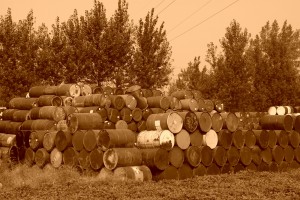4 tips for the safe handling of dangerous chemicals
 There was panic earlier this year when an employee at a government science lab managed to smash a flask containing the deadly tuberculosis (TB) bacteria. Being that TB is particularly virulent and presents a significant risk to health, the lab was immediately evacuated to limit exposure and to allow for a thorough clean-up of contaminants.
There was panic earlier this year when an employee at a government science lab managed to smash a flask containing the deadly tuberculosis (TB) bacteria. Being that TB is particularly virulent and presents a significant risk to health, the lab was immediately evacuated to limit exposure and to allow for a thorough clean-up of contaminants.
Fortunately most industries never have to handle deadly pathogens, but the TB spillage does have lessons for any business dealing with dangerous substances.
1. Keep an up-to-date inventory
The dropped flask had been stored at the bottom of a freezer for up to eight years, and most of the workers were completely unaware of its existence, let alone its location. Somewhere the flask and its contents would have been recorded on a central inventory, but by having a list of contents displayed on the freezer, the scientists would know exactly what they were dealing with every time they opened the door.
2. Use appropriate storage vessels
Being made of glass, the flask instantly shattered when it was dropped, spilling deadly bacteria into the freezer and across the floor of the lab. Had the contents been stored in a metal or reinforced plastic flask, it would have survived the fall without opening.
The problem was further compounded by the fact that the flask was wrapped in a paper bag. It was actually the tearing of the bag that caused the scientist to lose their grip, dropping it onto the floor.
3. Label containers appropriately
The investigation into the incident later found that the flask had been labelled correctly, but that it had iced up, making it unreadable. Worse still, by placing the flask in a paper bag, the label was also hidden from view, greatly increasing the risk of accident.
Obviously the answer is to use a labelling system that can withstand the specific environmental demands of where the chemicals are being used and stored.
4. Train for emergencies
The prompt actions of the scientists and the lab’s clean up crew helped to ensure that potential exposure to the bacteria was minimised. The scientists were able to raise the alarm and evacuate their workspace quickly and efficiently before anyone came into physical contact with the sample.
In the event of a biohazard emergency, every member of staff knew exactly what they must do, and they followed the plan perfectly. Although there were a series of mistakes in the lead up to the accident, the evacuation and clean-up plan may have actually saved many lives. Fortunately no one contracted TB, proving the lab safeguards did work in the end.
Reducing and managing risk
As part of a comprehensive workplace risk assessment, businesses need to consider and prepare for the very worst potential scenario. That means identifying how employees may come into contact with dangerous chemicals, and training them into how to deal with such situations.
Over to you – what are your best tips for managing hazardous substances?

A chartered (fellow) safety and risk management practitioner with 20+ years of experience. David provides a healthy dose of how-to articles, advice and guidance to make compliance easier for construction professionals, Architects and the built environment. Get social with David on Twitter and Linkedin.



